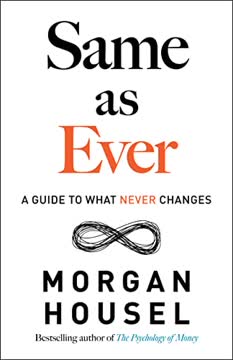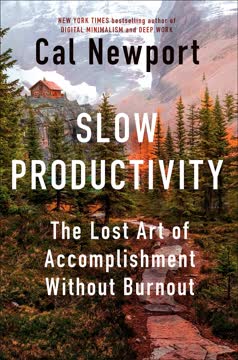Key Takeaways
1. Find Your Story: Everyday Moments Can Be Extraordinary
"There are meaningful, life-changing moments happening in your life all the time. That dander in the wind will blow by you for the rest of your life unless you learn to see it, capture it, hold on to it, and find a way to keep it in your heart forever."
Homework for Life. This simple yet powerful exercise involves reflecting on each day and asking yourself: "If I had to tell a story from today, what would it be?" Write down a brief snippet of the most storyworthy moment, even if it seems insignificant. This practice helps you:
- Develop a storytelling lens to see the extraordinary in everyday life
- Build a vast collection of potential stories
- Slow down time and make your life feel more expansive
By consistently doing this exercise, you'll discover that your life is filled with meaningful moments that can become compelling stories. These small, often overlooked experiences are often the most relatable and touching for audiences.
2. Craft Your Story: The Five-Second Moment is Key
"All great stories — regardless of length or depth or tone — tell the story of a five-second moment in a person's life, and the purpose of the story is to bring that moment to the greatest clarity possible."
Identify transformation. The five-second moment is a brief instance of change, realization, or transformation that forms the heart of your story. To craft an effective story:
- Find the moment when something fundamentally changes
- Start your story at the opposite of this moment to create an arc
- Structure everything else to serve and highlight this crucial moment
Examples of five-second moments:
- Realizing you're not alone in the world
- Discovering a hidden truth about yourself or others
- Making a life-altering decision
Remember, even in "big" stories (like surviving a car crash), the most impactful moment is often small and deeply human (like friends showing up at the hospital when family doesn't).
3. Engage Your Audience: Use Stakes to Create Suspense
"Stakes are the reason audiences listen and continue to listen to a story. Stakes answer questions like: What does the storyteller want or need? What is at peril? What is the storyteller fighting for or against? What will happen next? How is this story going to turn out?"
Five strategies for raising stakes:
- The Elephant: Clearly state the need, want, problem, or mystery early on
- Backpacks: Load the audience with your hopes and fears before an event
- Breadcrumbs: Hint at future events to keep the audience guessing
- Hourglasses: Slow down at crucial moments to build anticipation
- Crystal Balls: Make false predictions to create wonder about outcomes
By employing these techniques, you create a sense of urgency and make the audience invested in the outcome. This keeps them engaged and wanting to hear more, even in stories that might not seem inherently exciting.
4. Build Authenticity: Strategic Lies in True Storytelling
"As storytellers, we only lie for the benefit of our audience. We never lie for our own personal gain. We don't manipulate the truth, alter the fabric of reality, or shift time and space for our own benefit."
Five permissible lies:
- Omission: Leave out unnecessary details or characters
- Compression: Push time and space together for clarity
- Assumption: Make reasonable guesses about forgotten details
- Progression: Change the order of events for better emotional impact
- Conflation: Compress emotional transformation into a smaller timeframe
These "lies" are not about fabrication, but about crafting a more effective narrative. They help:
- Streamline the story
- Enhance clarity and impact
- Create a more satisfying emotional journey for the audience
Always remember: the goal is to serve the story and the audience, not to make yourself look better or change the fundamental truth of what happened.
5. Create a Mental Movie: Use Present Tense and Vivid Details
"In its best form, storytelling is time travel. If I am doing my job well and telling an excellent story, you may, for just a moment, forget that you exist in the present time and space and travel back to the year and location that I am describing."
Paint a vivid picture. To create a cinematic experience in the minds of your audience:
- Use present tense to create immediacy
- Provide specific physical locations for every moment
- Include sensory details to make the scene come alive
- Avoid anachronisms and audience acknowledgments that break the illusion
Tips for maintaining the "time travel bubble":
- Don't ask rhetorical questions
- Avoid props
- Downplay your physical presence (e.g., wear nondescript clothing)
By immersing the audience in the world of your story, you make it more engaging and memorable. They should feel as if they're experiencing the events alongside you, rather than just listening to a recounting.
6. Elicit Emotion: Surprise is the Key to Making People Cry
"When it comes to storytelling, I believe that surprise is the only way to elicit an emotional reaction from your audience. Whether it's laughter, tears, anger, sadness, outrage, or any other emotional response, the key is surprise."
Create contrast. To generate surprise and emotional impact:
- Set up expectations, then subvert them
- Hide critical information, then reveal it at the right moment
- Use humor to camouflage important details
- Create contrast between lighter moments and heavier ones
Techniques for preserving surprise:
- Avoid thesis statements that give away the ending
- Use stakes to heighten anticipation
- Carefully choose where to place important information in your story
Remember, the goal isn't just to make people cry or laugh, but to take them on an emotional journey. The most powerful stories often mix humor and heartbreak, creating a richer, more nuanced experience for the audience.
7. Perfect Your Delivery: Choose Words Carefully and Avoid Distractions
"The words you choose will in part determine how your audience perceives you. It will impact the opinions that they form about you."
Mindful word choice. Consider these guidelines when crafting and delivering your story:
Profanity:
- Use sparingly, if at all
- Only when it's the absolute best word choice or for authentic dialogue
Vulgarity:
- Avoid graphic details that might repulse the audience
- Use euphemisms and humor to handle sensitive topics
Names and references:
- Change names to protect privacy when necessary
- Avoid celebrity comparisons, which can alienate or distract
Accents:
- Generally avoid imitating accents, especially of other cultures
- Exception: You can imitate accents of parents/grandparents or your own region
By being thoughtful about your language and delivery, you maintain credibility and keep the focus on your story rather than on potentially distracting or offensive elements. This helps ensure that your message resonates with the widest possible audience.
Last updated:
FAQ
What's Storyworthy about?
- Focus on Storytelling: Storyworthy by Matthew Dicks is a comprehensive guide to mastering storytelling, emphasizing its power to engage, teach, persuade, and transform lives.
- Personal Narratives: The book encourages readers to discover and share their personal stories, asserting that everyone has a story worth telling.
- Practical Techniques: It offers practical exercises like "Homework for Life" to help readers identify and craft their stories effectively.
Why should I read Storyworthy?
- Enhance Communication Skills: The book can significantly improve your storytelling and communication skills, making you more engaging in various settings.
- Relatable and Accessible: Dicks uses humor and relatable anecdotes to make storytelling concepts easy to understand and apply.
- Transformative Experience: It encourages self-reflection and personal growth, helping readers connect with their own experiences and those of others.
What are the key takeaways of Storyworthy?
- Five-Second Moments: Great stories revolve around a five-second moment of transformation or realization, which is crucial to highlight.
- Finding Your Story: Techniques like "Homework for Life" help identify meaningful moments from daily life to turn into stories.
- Crafting and Telling: The book outlines how to structure stories with stakes and emotional resonance to captivate audiences.
What is "Homework for Life" in Storyworthy?
- Daily Reflection: This exercise involves reflecting on your day to identify the most storyworthy moment, fostering appreciation for small experiences.
- Story Collection: Consistent practice builds a collection of potential stories, training your mind to find stories in everyday life.
- Emotional Connection: It deepens your emotional connection to life experiences, making them easier to share with others.
How does Matthew Dicks define a story in Storyworthy?
- Transformation Over Time: A story is a narrative reflecting change over time, focusing on a moment of transformation or realization.
- Personal Narrative: Stories should be personal and authentic, allowing deeper connection with the audience.
- Not Just Events: A story must convey meaning and evoke emotions, not just recount events.
What are the "Five Permissible Lies" in storytelling according to Storyworthy?
- Artistic License: Storytellers can manipulate truth to enhance the narrative without personal gain, such as altering details for clarity.
- Types of Lies: These include exaggeration, omission, substitution, embellishment, and misdirection, all serving to enhance storytelling.
- Audience Engagement: These lies engage the audience, ensuring the story's essence remains intact.
What is the significance of the "Elephant" in storytelling in Storyworthy?
- Clear Stakes: The "Elephant" represents the central problem or mystery, setting the stage for the story.
- Immediate Engagement: Introducing the Elephant early captures attention and creates anticipation.
- Changing Color: The Elephant can change color, indicating shifts in focus or theme, keeping the audience engaged.
What is the But-and-Therefore Principle in Storyworthy?
- Causation in Storytelling: This principle helps create narrative momentum by connecting events with "but" and "therefore" to show causation.
- Enhancing Engagement: It maintains audience interest and emotional investment through a dynamic flow of events.
- Example in Practice: Dicks uses examples to show how this principle transforms mundane narratives into compelling tales.
How does Storyworthy address the concept of memory?
- Memory as Slippery: Dicks discusses how memory changes over time, affecting story accuracy, and emphasizes acknowledging these imperfections.
- Strategic Inaccuracies: Some inaccuracies can enhance the story while remaining rooted in truth.
- Collaboration for Accuracy: Involving others in recalling shared experiences can clarify memories and enrich storytelling.
How can I identify my own five-second moments according to Storyworthy?
- Reflect on Personal Experiences: Look back on life to find pivotal moments that evoke strong emotions.
- Use Homework for Life: Document daily experiences to identify storyworthy moments, recognizing the significance of ordinary events.
- Practice Storytelling: Share these moments with others to refine storytelling skills and make them more impactful.
What role does humor play in Storyworthy?
- Enhancing Engagement: Humor keeps the audience engaged and creates contrast during serious moments.
- Creating Emotional Connections: Laughter builds rapport, making the audience more receptive to the story.
- Surprise Element: Humor often relies on surprise, similar to other emotional responses, and should complement the story's core.
How does Storyworthy suggest handling difficult or sensitive topics in storytelling?
- Authenticity and Vulnerability: Be authentic and vulnerable, sharing personal struggles to connect deeply with the audience.
- Strategic Use of Humor: Use humor to lighten the mood, helping the audience process emotions without feeling overwhelmed.
- Focus on Meaning: Highlight personal growth or insight from difficult experiences to create impactful narratives.
Review Summary
Storyworthy receives mostly positive reviews, praised for its practical advice on crafting engaging stories. Readers appreciate the author's techniques, including the "Homework for Life" exercise and identifying the "5-second moment" in stories. Some find the book repetitive or self-congratulatory, while others value its insights for improving personal and professional communication. The audiobook narrated by the author enhances the experience for many listeners. Overall, it's considered a valuable resource for aspiring storytellers, public speakers, and those seeking to enhance their interpersonal skills.
Similar Books










Download PDF
Download EPUB
.epub digital book format is ideal for reading ebooks on phones, tablets, and e-readers.





